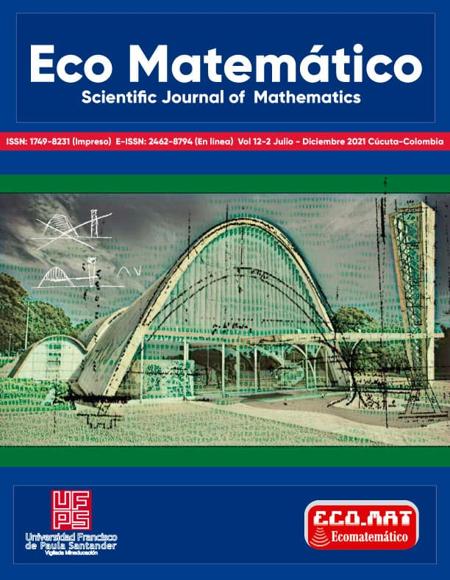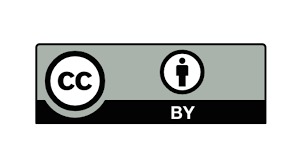The study of geometric properties of regular polyhedra: a digitally mediated approach
El estudio de propiedades geométricas de poliedros regulares: una propuesta mediada con tecnología digital
Main Article Content
The objective of the research was the design and implementation of a-didactic situations making use of the stages of school geometry and dynamic geometry software as a didactic means; for learning the properties of regular polyhedra. The designed situations were applied to fifth grade students in elementary school. The proposal was based on the theory of Didactic Situations; and in the methodological process of research and analysis, Didactic Engineering was a reference. The results of the investigation allowed to determine important aspects in the development of the stages of school geometry and the competences of communication, reasoning and solution of geometric problems; in addition to ratifying the didactic potential that digital technologies offer in the teaching and learning processes of Geometry.
Downloads
Article Details
Acosta, M. (2010). Enseñando transformaciones Geométricas con software de Geometría Dinámica. Documento presentado en el 11° Encuentro Colombiano Matemática Educativa. Colombia: Bogotá
Acosta, M., Monroy, L., & Rueda, K (2010). Situaciones a-didácticas para la enseñanza de la simetría axial utilizando Cabri como medio. Revista Integración. Universidad Industrial de Santander. Vol. 28, No. 2, pp. 173–189
Acosta, M (2017). Enseñando geometría con tecnología digital: una propuesta desde la teoría de las situaciones didácticas. Universidad Distrital Francisco José de Caldas. Colombia. Bogotá
Artigue, M. (1995). Ingeniería didáctica en educación matemática: Un esquema para la investigación y la innovación en la enseñanza y el aprendizaje de las matemáticas. Colombia. Bogotá
Badia, A., Chumpitaz. L.,Ibarra, A. & Llata, D. (2010). Niños nativos digitales en la sociedad del conocimiento: acercamientos conceptuales a sus competencias. Razón y Palabra. No. 72, pp 1-24. Disponible en http://www.razonypalabra.org.mx/N/N72/Varia_72/14_Ibarra_72.pdf
Camargo, L. & Acosta, M. (2012). La geometría, su enseñanza y su aprendizaje. Tecné, Episteme y Didaxis. (32). pp. 1-10. Disponible en: http://revistas.pedagogica.edu.co/index.php/TED/issue/view/197/showToc DOI: https://doi.org/10.17227/ted.num32-1865
Clemens, D. & Battista, M. (1992). Geometry and Spatial Reasoning. En D. Grouws (Ed.). Handbook of Research on Mathematics teaching and Learning: A Project of the National Council of Teachers of Mathematics (pp. 34-67). New York: NCTM
Conde-Carmona, R. J., & Fontalvo-Meléndez, A. A. (2019). Didáctica del teorema de Pitágoras mediada por las TIC: el caso de una clase de Matemáticas. Trilogía Ciencia Tecnología Sociedad, 11(21), 255-281. https://doi.org/10.22430/21457778.1187 DOI: https://doi.org/10.22430/21457778.1187
Conde-Carmona, R. J., Samper-Taboada, A. P., & Camacho-Mendoza, L. J. (2020). Experimental mathematics practices and mathematical modeling in math teachers in training for the construction of proposals for new ways of teaching quadratic function. Espacios, 41(30), 282-291
Hernández, R., Fernández, C. & Baptista, P. (2014). Metodología de la investigación (6a ed.). México, D.F., México: McGraw-Hill Interamericana
Janssen N, Lazonder AW (2015). Implementing Innovative Technologies Through Lesson Plans:What Kind of Support Do Teachers Prefer?.
Journal of Science Education and Technology 24:910–920 DOI: 10.1007/s10956-015-9573-5 DOI: https://doi.org/10.1007/s10956-015-9573-5
Lucumi, P. & González M. (2015). El ambiente digital en la comunicación, la actitud y las estrategias pedagógicas utilizadas por docentes. Tecné, Episteme y Didaxis. (37). pp. 109 – 129 DOI: https://doi.org/10.17227/01213814.37ted109.129
Ministerio de Educación Nacional. MEN (2015). Matrices de Referencia. Colombia. Bogotá
Mulder YG, Lazonder AW, De Jong T, Anjewierden A, Bollen L (2012). Validating and optimizing the effects of model progression in simulation-based inquiry learning. Journal of Science Education and Technology 21:722–729. DOI:10.1007/s10956-011-9360-x DOI: https://doi.org/10.1007/s10956-011-9360-x
Padilla Escorcia, I. A., & Junior Conde-Carmona, R. (2020). Uso y formación en TIC en profesores de matemáticas: un análisis cualitativo. Revista Virtual Universidad Católica del Norte, (60) DOI: https://doi.org/10.35575/rvucn.n60a7
Rodríguez, R., López, B. & Mortera, F. (2017). El video como Recurso Educativo Abierto y la enseñanza de Matemáticas. Revista Electrónica de Investigación Educativa, 19(3), 92-100. https://doi.org/10.24320/redie.2017.19.3.936 DOI: https://doi.org/10.24320/redie.2017.19.3.936
Rueda, Niño & Acosta. (2013). Automatización de decisiones didácticascon el software Cabri elem. Pp. 572-574. Universidad Industrial de Santander. Colombia
Squire KD, Jan M (2007). Mad City Mystery: Developing Scientific Argumentation Skills with a Place-based Augmented Reality Game on Handheld Computers. Journal of Science Education and Technology 16(1): 5-29. DOI: 10.1007/s10956-006-9037-z DOI: https://doi.org/10.1007/s10956-006-9037-z
Van Dijk AM, Lazonder AW (2013) Scaffolding students’ use of learner-generated content in a technology-enhanced inquiry learning environment. Interact Learn Environ. doi:10.1080/10494820.2013.834828 DOI: https://doi.org/10.1080/10494820.2013.834828
Vargas, V., Escalante, C. & Carmona, G. (2018). Competencias Matemáticas a través de la implementación de actividades provocadoras de modelos. Educación Matemática. 30(1), 213-236. DOI: 10.24844/EM3001.08 DOI: https://doi.org/10.24844/EM3001.08







